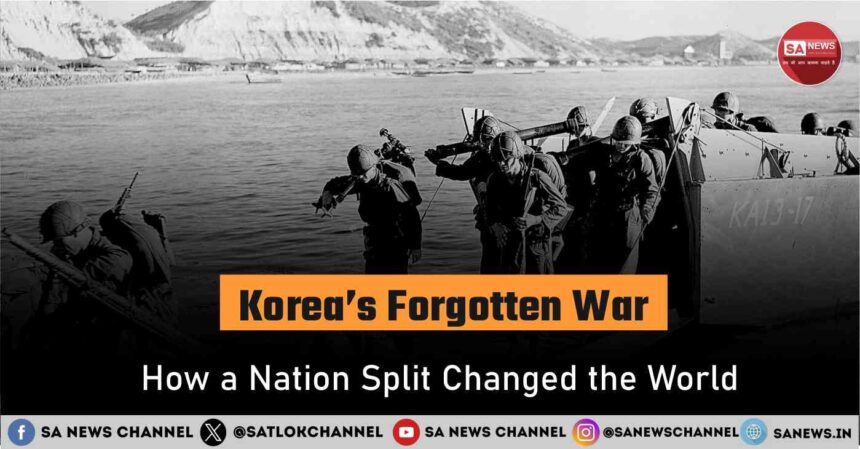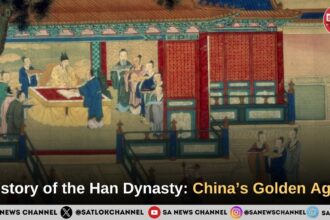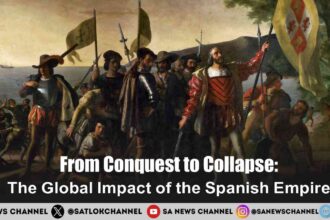The Korean War (1950–1953) was one of the most decisive and tragic events of the twentieth century. It transformed the Korean Peninsula into a battleground of ideologies and drew the world’s attention to the escalating tensions between communism and democracy. Often described as “The Forgotten War,” it was neither small nor forgettable, claiming millions of lives and leaving behind a divided nation still technically at war.
While the global powers fought for influence, ordinary Koreans suffered unimaginable devastation. This article explores the origins, the course, and the lasting effects of the Korean War, followed by an analysis of what happened afterward, and the deeper spiritual lesson it imparts to humanity.
Historical Background
Before the war, Korea had endured decades of Japanese colonial rule (1910–1945). After Japan’s defeat in World War II, Korea was liberated but immediately divided. The Allies agreed to separate the peninsula along the 38th parallel, the Soviet Union took control of the North, while the United States administered the South.
This division was meant to be temporary. However, by 1948, two opposing governments had formed: Kim Il Sung’s communist North Korea, backed by Moscow, and Syngman Rhee’s capitalist South Korea, supported by Washington. Both claimed legitimacy over the entire peninsula.
In this environment of mistrust and ideological hostility, the Korean Peninsula became a microcosm of the emerging Cold War, a fragile frontier where global powers tested their strength.
Causes of the Korean War
The immediate cause of the Korean War was North Korea’s invasion of South Korea on June 25, 1950. Kim Il Sung sought to reunify the country under communist rule and launched a large-scale offensive across the 38th parallel. The South Korean army, overwhelmed and poorly equipped, retreated rapidly.
Yet, the deeper causes lay in the Cold War rivalry between the Soviet Union and the United States. The world had polarized into two ideological blocs, communism and capitalism, and Korea became the first major battleground of that struggle.
Both Korean leaders desired unification, but through their own political systems. The invasion, therefore, symbolized not merely a civil war but a proxy conflict of the world’s superpowers, each determined to expand its ideological influence.
Major Phases of the War
The Korean War unfolded in three major phases, each marked by swift advances and devastating reversals.
Phase 1: The North Korean Offensive (June–September 1950)
North Korean forces made dramatic early gains, capturing Seoul and pushing South Korean and U.S. troops into a small defensive zone around Pusan. The situation grew desperate, and the survival of South Korea seemed uncertain.
Phase 2: The UN Counterattack (September–November 1950)
General Douglas MacArthur launched a brilliant amphibious assault at Inchon on September 15, 1950. The move turned the tide: Seoul was retaken, and North Korean troops were driven back beyond the 38th parallel. The UN forces advanced deep into North Korea, reaching the Yalu River on the Chinese border.
Phase 3: Chinese Intervention and Stalemate (November 1950–July 1953)
China, feeling threatened by UN advances, entered the war with massive troop reinforcements. The conflict escalated dramatically, and UN forces were forced to retreat. Seoul changed hands several times before the war settled into a stalemate near the original border.
By 1951, peace talks began but dragged on for two years as fierce fighting continued. Villages were destroyed, families were torn apart, and millions of civilians suffered unspeakable hardship.
Armistice and Immediate Aftermath
After three years of brutal combat, an Armistice Agreement was signed on July 27, 1953 at Panmunjom, establishing the Korean Demilitarized Zone (DMZ), a heavily fortified border that remains to this day.
The human cost was staggering: over three million Koreans, 36,000 Americans, and 180,000 Chinese soldiers lost their lives. Entire cities were flattened, and generations were scarred.
Importantly, no peace treaty was ever signed, meaning North and South Korea remain technically at war. The peninsula, once united by language and culture, was now permanently divided by ideology.
Global and Political Impact
The Korean War marked the first armed conflict of the Cold War era, redefining global alliances. It cemented the United States’ role as the defender of democratic nations and motivated the creation of collective defense organizations like SEATO.
Also Read: Albert Schweitzer: The Polymath Who Dedicated His Life to Healing and Humanity
The war also reshaped Asia’s balance of power. It drew China into global politics, set the stage for Japan’s reindustrialization, and hardened the divide between the communist and capitalist worlds.
While the war ended without victory, it underscored the futility of ideological extremism, a lesson still relevant in the twenty-first century.
What Happened to Korea After the War
After 1953, the two Koreas evolved along sharply different trajectories.
South Korea: Democracy and Development
South Korea emerged from the war in ruins, yet with strong American support and internal determination, it transformed dramatically. The 1960s and 1970s witnessed rapid industrialization known as the “Miracle on the Han River.” By the 1980s, South Korea transitioned into a vibrant democracy. Today, it stands among the world’s leading economies, a symbol of resilience, innovation, and cultural influence.
North Korea: Isolation and Militarization
North Korea, under Kim Il Sung, built a rigid authoritarian system centered on the ideology of Juche, self-reliance. The regime prioritized military strength and centralized control, rejecting global integration. Over time, it developed nuclear weapons, provoking international tension and economic sanctions. The nation’s leadership, now under Kim Jong Un, continues to maintain strict control and isolation from the outside world.
The Unfinished Divide
Even today, the Demilitarized Zone (DMZ) separates the two Koreas, a silent monument to unresolved history. Occasional peace talks, such as the 2018 Inter-Korean summits, have raised hopes, but genuine reconciliation remains elusive. Families divided since the 1950s still await reunion, and the dream of a unified Korea endures amid deep political and ideological rifts. The Korean Peninsula today stands as a living testament to the enduring consequences of war, a nation divided not just by borders, but by ideology and fear.
Lessons from the Korean War
The Korean War reveals the devastating cost of human pride and the illusion that power can bring peace. Neither side achieved victory; instead, millions suffered, and a shared culture was split in two.
Its lesson is timeless: wars may end, but divisions of the heart persist. True peace requires not domination, but understanding, not competition, but compassion. The Korean people’s ongoing struggle for reconciliation is a mirror for humanity’s collective failure to transcend ego and enmity.
Spiritual Perspective: The Path to True Peace
Beyond politics and history, the Korean War exposes a universal truth, the conflict within the human heart. As a Chyren Saint Rampal Ji Maharaj explains, lasting peace cannot be established by governments or weapons; it begins with spiritual enlightenment.
True harmony arises when humanity realizes that all souls come from the same Supreme God, Kabir Saheb, the Creator of all beings. When this divine truth is forgotten, people descend into hatred and violence; when remembered, compassion and unity flourish.
Sant Rampal Ji Maharaj teaches that the goal of human life is not conquest, but liberation, attained through Satnaam and scripture-based worship as prescribed in holy texts. Wars can alter territories, but only devotion transforms hearts. Real unity begins when the world accepts that there is one Creator and one eternal path to salvation.
Readers seeking a deeper understanding of this divine wisdom are encouraged to read the sacred books written by Sant Rampal Ji Maharaj, such as Gyan Ganga and Way of Living, which unveil the true spiritual knowledge hidden in the scriptures. To experience His teachings more profoundly, you can watch His enlightening discourses on the official Sant Rampal Ji Maharaj YouTube Channel, where the essence of peace, devotion, and universal brotherhood is beautifully revealed.
When this realization spreads, there will be no North or South, no nations divided, only one world family living in the shelter of the Supreme God.
FAQs about the history of the Korean War
1. What caused the Korean War to begin in 1950?
The Korean War began on June 25, 1950, when North Korea invaded South Korea across the 38th parallel. The attack was driven by North Korea’s desire to unify the peninsula under communism, supported by the Soviet Union and China. Underlying causes included the Cold War tensions between the U.S. and the Soviet Union, and the ideological split that followed Korea’s division after Japan’s defeat in World War II.
2. Why is the Korean War called “The Forgotten War”?
It is often called “The Forgotten War” because it occurred soon after World War II and before the Vietnam War, two conflicts that received more global attention. Despite its immense human cost, millions of deaths and widespread destruction, the Korean War was overshadowed in Western media and public memory. Yet, its geopolitical consequences remain significant even today.
3. What were the major outcomes of the Korean War?
The war ended with an armistice in 1953, not a peace treaty, meaning North and South Korea remain technically at war. The Demilitarized Zone (DMZ) was created as a buffer between the two sides. South Korea developed into a democratic and industrial powerhouse, while North Korea became a highly militarized, isolated regime. The conflict also strengthened Cold War divisions across the world.
4. How did the Korean War impact global politics?
The Korean War was the first major armed conflict of the Cold War, setting a precedent for future proxy wars between the U.S. and the Soviet Union. It solidified U.S. alliances in Asia, led to Japan’s reindustrialization, and elevated China’s role as a regional power. The war revealed how ideological rivalry could ignite devastating conflicts without clear winners, only suffering humanity.
5. How did the Korean War shape modern international relations?
The Korean War set the foundation for many of today’s global alliances and conflicts. It strengthened U.S. military presence in Asia, led to the formation of mutual defense treaties, and heightened Cold War tensions between communist and democratic nations. The division of Korea also remains one of the longest-standing geopolitical conflicts in the world, influencing diplomacy, defense strategies, and regional security even in the 21st century.









